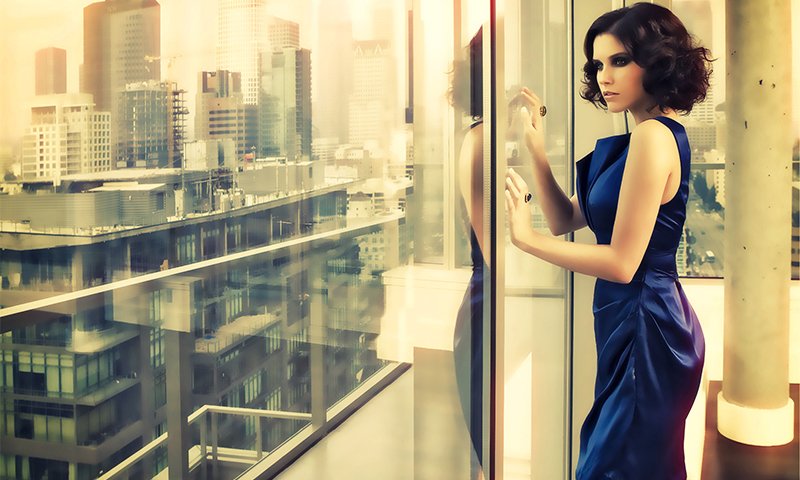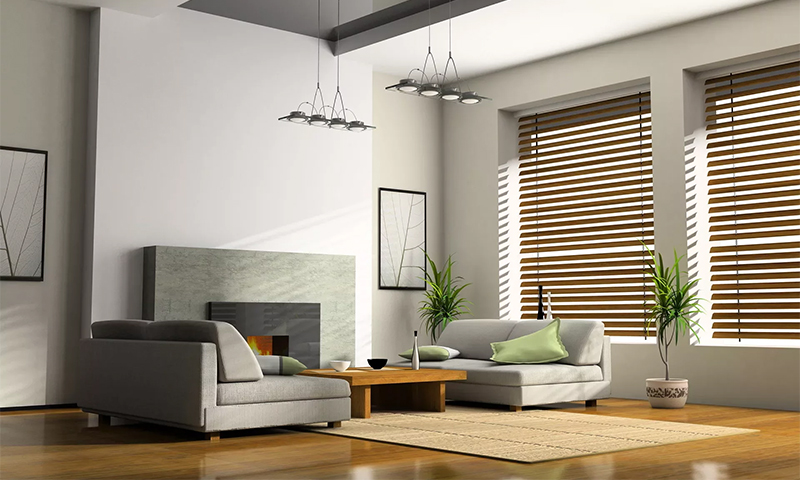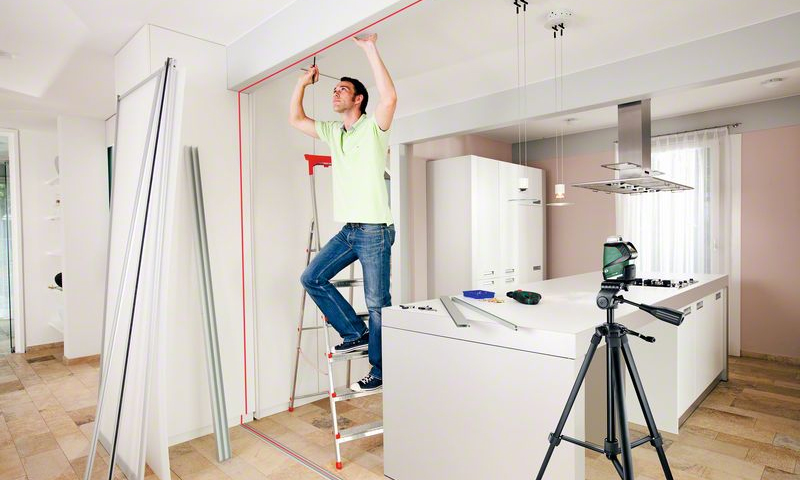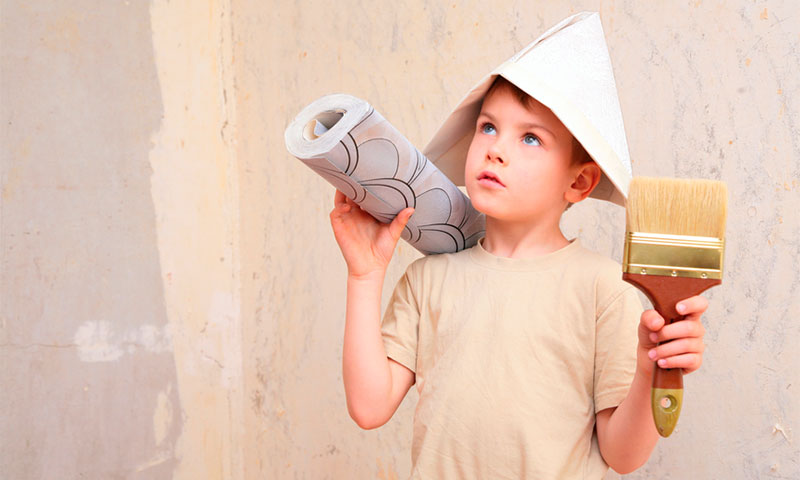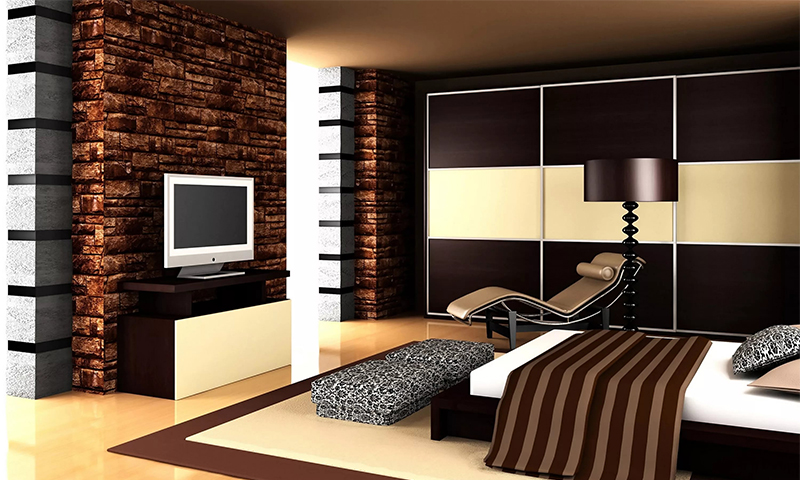Those who start overhaul, total warming of housing or even build from scratch, now need to put new windows into the estimate. And for this you need to decide on their design, profile material and their requirements for double-glazed windows. To understand all the nuances and choose the best option will help our experts.
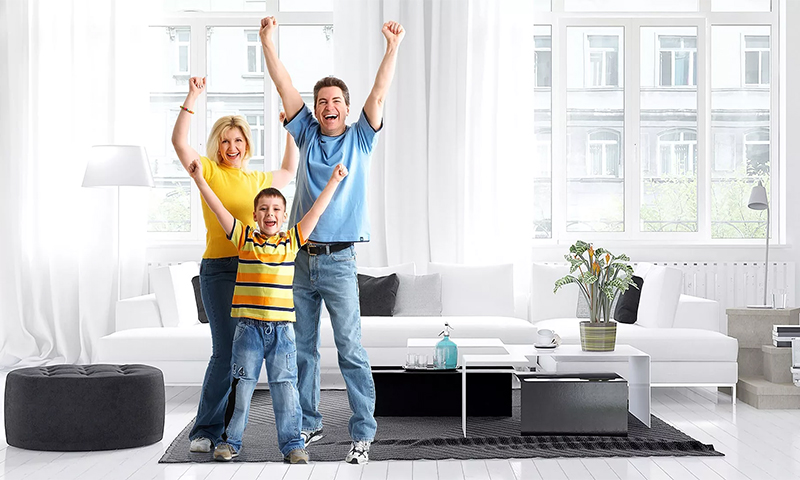
Content:
The best window manufacturers - which company to choose
Modern plastic structures are best ordered from companies working with profiles:
- Rehau;
- Kaleva;
- Veka;
- Schuco;
- KVE.
The most high-quality aluminum frames for exterior glazing are manufactured by Nordic Aluminum, Krauss, Provedal and Aluminum. But the wooden and "mixed" eurowindows is better to take Finnish and Belarusian brands, such as Tiivi or Wooder.
It is possible to focus on the products of the listed brands at the initial stage, looking for a contractor who will make frames from the chosen profile according to your sizes. But then you have to make a decision about the design, as well as the main characteristics of the window. And here you need to know about all the pitfalls.
The principle of operation and the device of modern windows
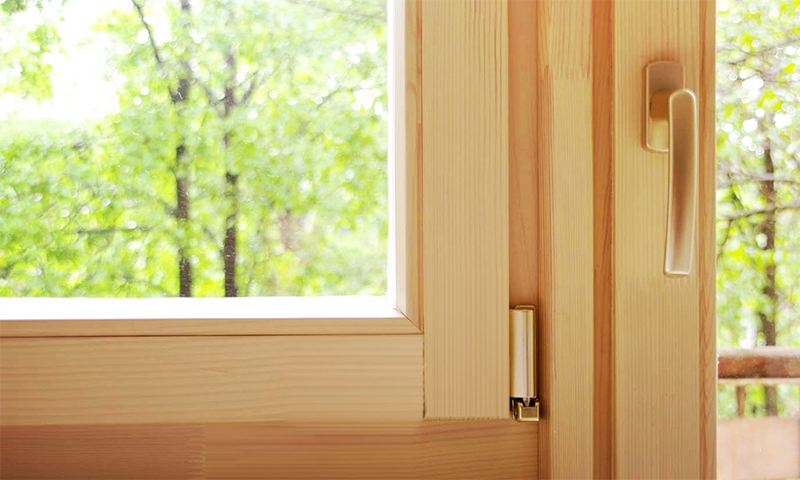
There is no need to tell in detail about the design of classic wooden windows - they are a simple frame of profiled bars with glass panes installed in the gaps. Even modern "European" designs differ from them only in the presence of sealed double-glazed windows and more advanced fittings.
Metal constructions are more complicated and interesting. Here the window unit is a PVC profile with numerous cavities of different sections. They make it possible to lighten the weight of the frame, but to maintain its maximum rigidity, and at the same time perform the functions of heat-saving air pockets. To reinforce the window profile, metal U or L-shaped slats made of galvanized or aluminum are also used.
Pure aluminum frames can be as complex as PVC blocks. Such a profile is called “warm” because it has thermo and noise insulating inserts that improve the protective properties of metal windows. The “cold” profile is simpler, thinner and lighter, but due to the high thermal conductivity of the alloy it is not suitable for glazing heated rooms.
As for the fittings, then in all modern windows about the same set is used. These are opening mechanisms (hinges, leverage systems, rollers and thrust), plus locks combined with leaf handles.
Types of windows
Wood
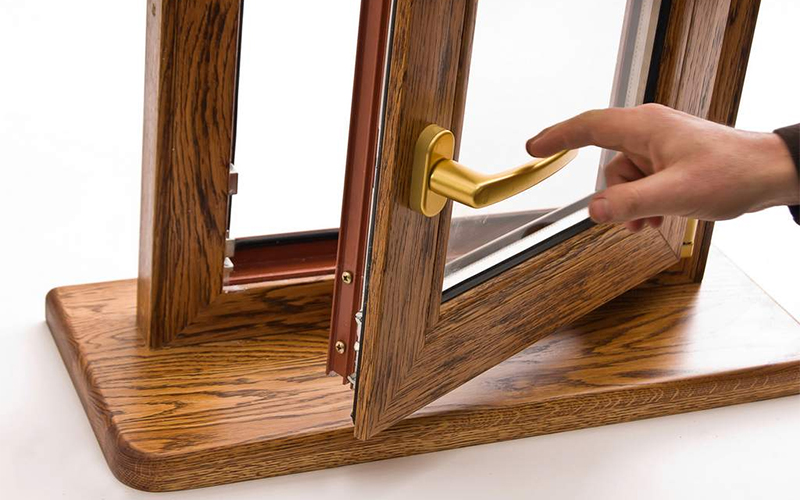
The oldest view of the windows still has not lost relevance. Wooden frames give the rooms a special comfort and with proper care they always look aesthetically pleasing.
Today, manufacturers offer windows made not only from a wooden array, but also from laminated veneer lumber.
The latter show themselves better in operation, since they are less susceptible to shrinkage / swelling when the humidity changes. And they are equipped with the same sealed double-glazed windows, as well as metal-plastic construction.
Pros:
- Environmental friendliness;
- Aesthetic and "cozy" appearance;
- Easy repair;
- Maintain normal air circulation, even with closed doors;
- Long service life, although it all depends on the selected type of wood.
Minuses:
- Ordinary wooden windows can swell, crack and warp due to constant changes in humidity;
- Requires a certain care - at least regular staining;
- High-quality resistant wood frames are expensive.
Plastic
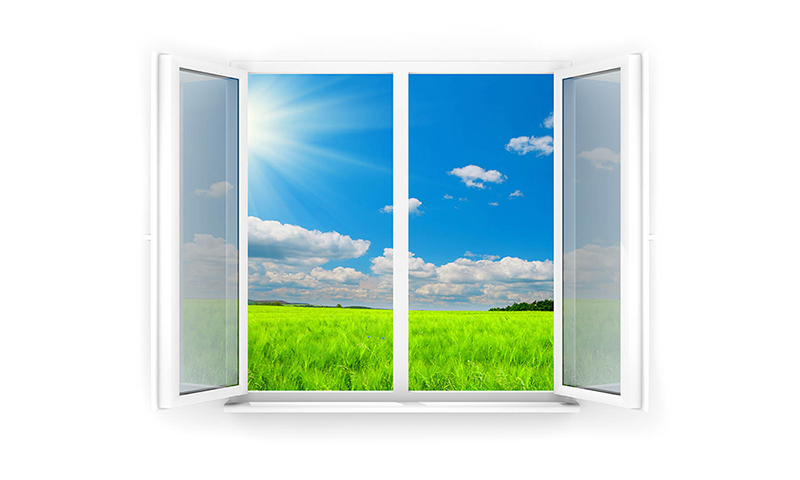
Plastic and metal-plastic windows were not so good at first. The very first structures emitted harmful chlorine into the air and certainly could not be considered environmentally friendly.
Today, manufacturers have solved this problem by creating truly safe profiles. Nevertheless, the use of plastic in construction is still a lot of controversy.
Pros:
- Sealed windows do not let in the cold and cut off external noise well;
- Frames do not require additional care and are easy to clean;
- Not afraid of high humidity;
- Aesthetic appearance and the ability to choose any color of the frame - even "under the tree";
- Relatively light weight;
- Affordable cost.
Minuses:
- In winter, plastic becomes brittle and can crack even from a mild impact;
- Low maintainability;
- Combustibility;
- Absolutely sealed, which stops the flow of fresh air, and the premises have to be ventilated forcibly.
Aluminum

These are sturdy and durable constructions that can often be seen in production halls, offices and government institutions. However, the "warm" metal profiles are quite suitable for glazing of residential premises. Aluminum is a great choice if you need to do something once and for all.
Pros:
- High strength and long service life (at least 60 years);
- Corrosion resistance;
- The possibility of making very large frames, complex radius structures and solid glazing;
- Environmentally friendly at home - there certainly will not be any chemical fumes;
- At the factory it is possible to paint the frames in any, even the most audacious colors;
Minuses:
- Large heat loss in the "cold" profiles;
- High price;
- Like PVC, they are absolutely hermetic and require proper organization of ventilation in the room.
In addition to the listed types of windows, there are also combined profiles: aluminum + wood, plastic + wood, aluminum + plastic.
They inherit their advantages and disadvantages from the materials from which they are made. Only here their pronounced features are balanced and the minuses are less critical.
Window selection options
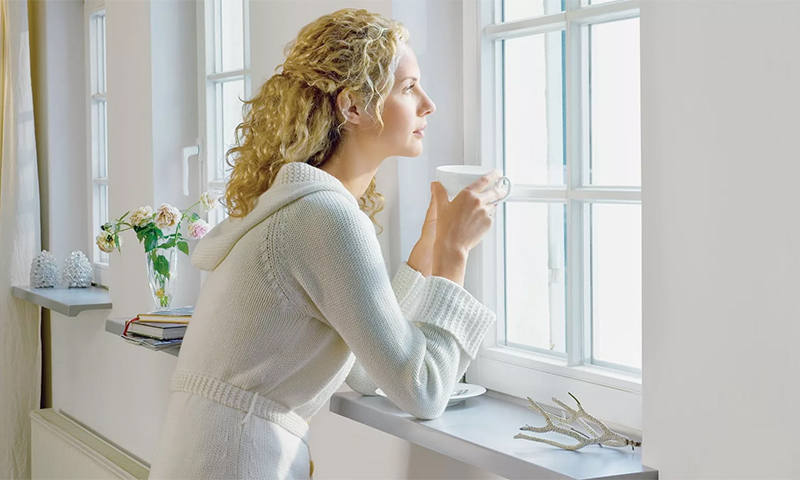
Design
In the majority of window constructions at least one blind leaf (transom) is used. It allows you to increase the area of penetration of light without reducing the strength of the frame. In addition, the lack of opening mechanisms significantly reduces the cost of such an element.
However, for ventilation and care of the windows still need sash. Their number is determined by the width of the opening, permissible loads on the frame and fittings, but at the same time complies with the requirements of maintaining high light transmittance of the entire window.
Opening direction
If earlier windows could only be opened inwards (apartment) or outward (for private houses), now with the advent of new mechanisms in the manufacture of frames, other interesting solutions can be realized:
1. Folding windows - a convenient way of airing the premises. It is enough for this to have one flap in the window block. True, in pure form, such mechanisms are usually not used, but are complemented by swinging loops.
2. Suspended - this is a folding window in reverse. The flap is mounted on special mechanisms at the top and opens with a "visor". It is most convenient to use such frames in wide, but low openings or when glazing the roof of the attic. However, separate suspended windows in window blocks are also found.
3. Vertical lifting - this fashionable option abroad we have not particularly caught on. When opened, the lifting frame saves free space, but if it is not securely fixed, it can fall back with a crash and cause injury. Another disadvantage of such structures is poor thermal insulation.
4. Sliding - the best option for windows with large doors, creating too high a load on ordinary hinges.Such models are chosen for glazing of balconies, verandas and loggias, so that open doors do not “eat” pieces of an already cramped space.
5. Mid-turn - non-standard solution combining the simplicity of hinged windows and the convenience of sliding structures. When you open the sash on the levers come closer to the center of the window, without touching the slopes.
Important: windows of external opening can be used only on the ground floor, since by reaching for the handle of the open sash you risk falling out onto the street. In addition, such frames require careful fastening, otherwise the window unit itself will fall out over time.
Impost or shtulp?
The impost is the central timber of a double-windowed window, to which closed shutters adjoin. When the windows are open, this design does not look very attractive, dividing the opening into two parts. But it is its only minus.
Imposting porch provides a more dense junction of the valves in the closed position, that is, the best thermal and noise insulation. In addition, it performs the function of an additional stiffener, due to which the window unit (especially if it is wide) will last longer.
Shtulpovye windows do not have partitions, so when closing the sash simply close with each other. With this decision, it is very difficult to get a really tight porch on the border of two frames - not every manufacturer manages to create such a verified design. And so inexperienced installers can completely reduce all the efforts of developers to nothing.
On the other hand, the lack of an internal divider makes the frame lighter (i.e., cheaper) and increases the width of the glazing by a few centimeters. If the window opening is small and you want to save a little, you can consider this option.
Glazing features
Since the large area of the window is occupied by the glazing, its characteristics will determine the protective properties of the whole structure. The main role here is played by the number of air chambers between the panes.
The usual double glazing under the bead has long been time to give up - because of their low thermal protection. So here we will only talk about sealed bags.
Today, manufacturers offer such options:
1. Single-chamber double-glazed windows (2 sheets)
The simplest type of glazing, which is suitable for unheated premises or the southern climate with its mild winter. Such blocks have the lowest heat transfer resistance of 0.32-0.37 m2 · ° C / W, and already at -10 ..- 15 degrees the glass begins to freeze from the inside. Noise isolation here is also not up to par (no more than 25 dB of external sounds are cut off), therefore single-chamber double-glazed windows can be recommended only to residents of quiet areas.
2. Two-chamber double-glazed windows
A good choice for most private houses and city apartments. Heat resistance of such structures reaches 0.44-0.58 m2 · ° С / W, plus they cut off 30-39 dB of external noise. But these figures are largely dependent on the width of the gaps between the panes. If the windows in the apartment overlook the road or a busy street, it is better that the air gap facing outside is more internal.
3. Three-chamber windows
The warmest and “quietest” windows that do an excellent job with their protective functions even at -30 ° C due to thermal resistance over 0.65 m2 · ° C / W. However, due to the total thickness of the glass, their light transmission ability is noticeably reduced. In addition, such a glass unit requires a powerful frame, a sufficient width of the opening walls, and this design weighs a lot, creating an excessive load on the accessories.
Glass coating
Usually people choose transparent glass windows with no special properties. But if necessary, you can order coated glass, completely changing their characteristics:
1. Toning - relevant for shading windows facing the south side, or if you want to hide from the prying eyes of neighbors from the house opposite.
2. Triplex - such blocks are made using the same technology as automotive ones.Several sheets are glued with a transparent film, which provides greater strength and safety even when the window is broken. Actually for residents of the lower floors and the private sector.
3. Energy-saving spraying - ensures maximum thermal insulation, reducing heat loss by up to 10%. However, for this, argon is additionally completed in the inner chambers of the glass unit.
There are so-called noise protection windows. Only here not spraying is used, but a special system of assembling the glass unit from transparent sheets of different thickness.
Profile characteristics (for plastic windows)
Plastic profile hollow chambers are not only used to facilitate construction and reduce material consumption. They drain condensate and form air pockets, which reduce heat and sound conduction from the frame. Accordingly, the more cameras inside the selected profile, the warmer and “quieter” the window will be.
1. Three-chamber profiles have a width of 58-62 mm - this is an economy version, designed for efficient operation at a temperature outside not lower than -15 ° C.
2. 4-5 cameras increase the width of the profile up to 62-74 mm - such windows are suitable for temperate and harsh climates.
3. 6-7 cameras (80-90 mm) have only the best frames of the premium segment. But, firstly, they are not always possible to find with contractors, and secondly, in their insulating characteristics, they are not so far away from standard five-chamber structures.
Be sure to pay attention to the class of windows - it will tell you how thick the plastic was used in their production:
1. A - the most durable and durable frames with a thickness of the outer walls of 2.8 mm and 2.5 mm inner.
2. B - external plastic walls of such a profile have a thickness of 2.5-2.8 mm, internal 2-2.5.
3. C - this includes constructions that do not fall into any of the classes listed.
Wood grade (for wooden windows)
Manufacturers of wooden frames offer a fairly rich selection of designs from the most diverse, sometimes very exotic woods.
Most often on sale there are three types of wood:
1. Oak
Oak frames - the most durable, and with proper care, their service life reaches 100 years. True, the finished structures are quite heavy and create a high load on the mount and hinges. Oak wood is dense, resistant to decay, but it is very fond of pest bugs, so the raw materials in production undergo special treatment with chemical compositions. So to speak about 100% environmental friendliness of the impregnated lumber is not necessary.
2. Larch
Ideal, albeit a little less durable than oak. Larch has natural protection against pests, moisture, decay and practically does not require chemical treatment. Another advantage of the larch massif is medium weight: the fittings for such windows can be used with the standard type - it will stand.
3. Pine
The most common, cheap, but short-lived option. Soft wood requires careful handling because it is easily covered with chips and dents even during installation. Also on the pine it is necessary to update the paintwork more often, otherwise bluish "corpse spots" will begin to appear on the frame. In order to at least a little extend the service life of such windows, they are still impregnated with various compositions in the production, tightly clogging the natural pores. But the warm amber color of the pine will effectively complement any eco-interior.
Which window is better to choose
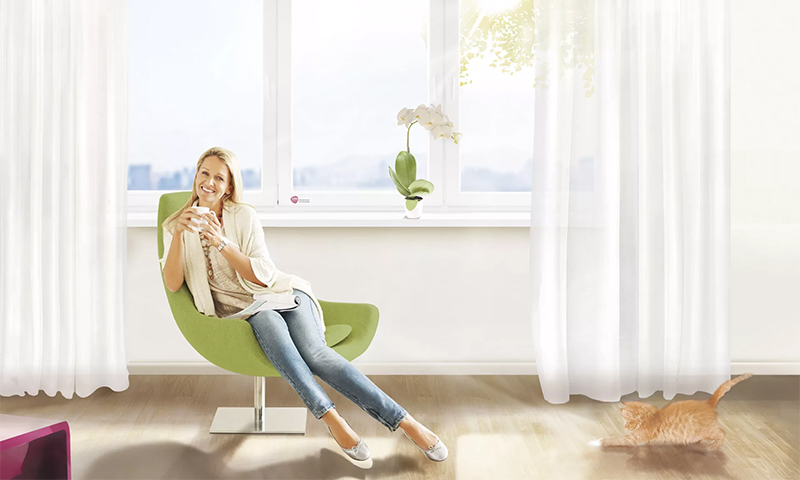
1. Standard openings in typical apartments are best equipped with wooden windows made of larch: with two-chamber double-glazed windows in the middle lane, and three-chamber windows in the northern regions. If the money for such a purchase is not enough, you can take a combined version of pine and aluminum. It is also not worthwhile to chase a complicated structure - the “German” window with one hinged sash, additionally equipped with a folding mechanism, is quite suitable.
2. For tight unheated premises (loggia, corridor, cold storage room, etc.), aluminum or cheaper PVC windows with lifting, folding or sliding doors are suitable.The profile is enough and 3 cameras, and the glass unit can be selected single.
3. High French windows at the cottage or medium-sized traditional openings will look good in shtulpovovym performance. For such structures fit any wood, and the sash can open both inward and outward. As an option for narrow windows, you can also consider “English” lifting frames, if the winters in your region are not too severe.
4. Low and long windows under the ceiling or in the roof of the attic is better to make suspended, choosing the model of external opening. The profile here should be particularly resistant to moisture, and therefore, you need to choose between aluminum and metal-plastic.
5. Ate next to the window you have close furniture, large household appliances or other dimensional things, it makes sense to order medium-pivot windows. When plowing, they are displaced and do not cling to the objects placed nearby. Choose a lighter material (plastic, pine), so as not to bend complex fittings.
How much are the windows
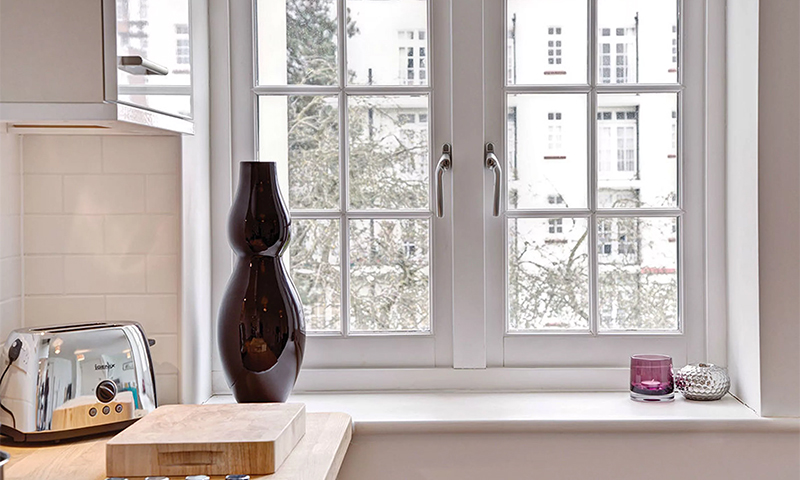
Plastic construction:
1. The cheapest PVC window of a small size without opening mechanisms will cost about 800 rubles. And about 2-3 thousand, if you need at least a single-door design.
2. The standard “flat” version with one transom and an additional one will pull in the amount of 3,800 rubles, and the frame for a wide opening will be from 5 thousand and more.
3. The ceiling for complex metal constructions is at the level of 17-18 thousand rubles. Glazing bay window or loggia will be another 50% more expensive.
Wooden windows:
1. Classic “Russian windows” start from 3.5-4 thousand rubles.
2. For 5000-9000 you can buy an inexpensive double-winged frame from an array with a sealed double-glazed window.
3. The use of laminated veneer lumber and glass blocks will increase the cost of finished products to 20-45 thousand rubles (tricuspid frames will be 1.5 times more expensive).
Aluminum profiles:
1. A frame with a “cold” aluminum profile and standard glazing can be ordered for at least 9.5-10 thousand.
2. For "warm" designs ask for 15-20 percent more.
Manufacturers offer skylights made of metal-plastic at prices ranging from 13 to 30 thousand rubles. For wooden products, the run is even wider - from 9 to 40 thousand.
It will be interesting to friends too



